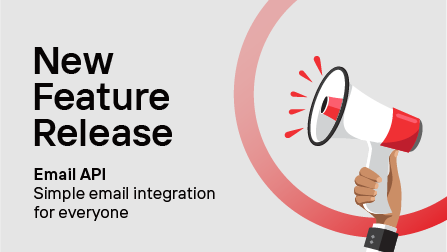The use of Short Message Service (SMS) is growing at a rapid rate with Application-to-Peer (A2P) SMS taking a large chunk of the messages sent. In 2017 alone, 1.67 trillion A2P messages were sent out. This number increased to about 1.7 trillion in 2018, and by 2022 Mobilesquared has estimated that A2P SMS traffic will grow to 2.8 trillion.
It is wise to say there are business opportunities for A2P SMS service providers that will be utilized which will consequently lead to the emergence of unqualified and substandard A2P SMS providers with standard SMS APIs.
This write up provides you with seven things to consider as a business when choosing an A2P SMS service provider.
1. Coverage Area of a Provider
The first thing you should consider before choosing an A2P SMS provider is its area of coverage. You need to know the region(s) covered by any service provider before even considering other things. No matter how good an SMS service provider’s SMS API is, it becomes dead on arrival if your intended region is not covered.
2. Type of coverage
Another metric regarding coverage is the type of connection – you might get tricked about this if you don’t do your research thoroughly. Generally, there are of two types of connection – direct and indirect. For a direct connection, there is a direct pathway between the A2P SMS provider gateway and the Mobile Network Operator (MNO). However, in the case of indirect connection, the SMS provider will need to route their connection to an MNO through another SMS provider. Unless there is no A2P SMS provider with a direct connection available, it’s better to use direct connections whenever possible as indirect connections may have the following issues:
- Longer delivery time.
- Delivery reports might not get to the original sender.
3. Check delivery rate
Not all messages sent by an SMS gateway get delivered to their recipients for a number of reasons, which include:
- Number portability issues
- Use of indirect connection by SMS service providers
- Unsent delivery reports
- Invalid mobile phone numbers
- Do not disturb lists
- Use of grey routes
4. SMS gateway throughput and latency
Latency is the time required to perform some actions while throughput is the number of such actions executed per unit time. The throughput and latency determine how fast the SMS get processed and begin transmission to the MNOs. Usually, any SMS gateway that cannot process and start sending messages within milliseconds is not worth to be an SMS gateway.
SMS gateways are just servers (computer and/or software) that are connected to the Short Message Service Center (SMSC) and is built with the ability to send and receive text messages. Tier 1 SMS providers processes within milliseconds.
5. Phone number portability handling
One of the things you should consider when choosing an SMS API for your A2P SMS campaign is how its gateway/server handles phone number portability issues. MNOs provide customers with the option of porting their phone numbers to a different operator without losing the number. The ability to port numbers from one network to another creates problems for A2P SMS providers. When an SMS provider wants to send a message to a number, it routes the message according to the prefix used which is mapped to a specific network/operator.
However, since there’s a change in MNO, it means the SMS gateway will be sending the SMS to the former MNO for routing. Since the subscriber is no longer with them, the message is never sent to the recipient.
Different SMS providers handle this differently. Generally, there are two ways to handle phone number portability. These are Home Location Register (HLR) lookup and ENUM lookup. The HLR method is one of the most efficient ways of handling the number portability issue. An HLR is a number lookup service used to determine the MNO a number is registered to.
6. SMS channel route
The route an A2P SMS provider uses is as important as any other factor on this list. Generally, there are two types of channels being used by SMS gateways to send SMS. The first and the recommended one to use is the “Tier One Connections” which is 100 percent legitimate. As a legitimate business, you shouldn’t be found making use of illegitimate means.
The second route is the Grey route which is usually associated with the indirect connection and SS7 leaks – a vulnerability that can be exploited.
7. Pricing
It is no news saying there are some free SMS providers in the industry. Why then should you pay for what you can get free of charge? You should pay for services rendered because there is no such thing as free SMS. Stay away from A2P SMS providers offering free SMS services, don’t provide your hard-earned customers' phone numbers to any company because of the free tag.
However, while you’re being asked to stay off free SMS providers, avoid overpaying for such services.
The A2P SMS service industry in the MEA region had been proliferated with substandard SMS API providers. However, with the right eye, money, research, and attention to detail, getting one that meets your business needs wouldn’t be that difficult. One of such based-on recommendations is CEQUENS.
CEQUENS is a MEA CPaaS provider
If your target area is the Middle East and Africa (MEA) region, then CEQUENS is an excellent option for you.
CEQUENS is an A2P SMS service provider with a direct connection to over 700 MNOs. This A2P SMS provider had since its establishment in 2011 sent over 6 billion SMS to mobile phones. The company gets over 300 million delivery reports daily and gets their SMS API called 45 million times every day.
Read Now: What Are Communication APIs and Why Are They Needed?


